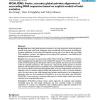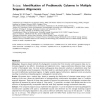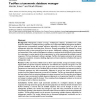194 search results - page 2 / 39 » Gene Sequence Alignment on a Public Computing Platform |
BMCBI
2006
13 years 5 months ago
2006
Background: Non-coding DNA sequences comprise a very large proportion of the total genomic content of mammals, most other vertebrates, many invertebrates, and most plants. Unravel...
ALMOB
2008
13 years 5 months ago
2008
Motivation: Sequence-based methods for phylogenetic reconstruction from (nucleic acid) sequence data are notoriously plagued by two effects: homoplasies and alignment errors. Larg...
RECOMB
1997
Springer
13 years 9 months ago
1997
Springer
A progressive alignment algorithm produces a multi-alignment of a set of sequences by repeatedly aligning pairs of sequences and/or previously generated alignments. We describe a ...
BMCBI
2006
13 years 5 months ago
2006
Background: Phylogenetic analysis of large, multiple-gene datasets, assembled from public sequence databases, is rapidly becoming a popular way to approach difficult phylogenetic ...
BMCBI
2005
13 years 5 months ago
2005
Background: Pairwise stochastic context-free grammars (Pair SCFGs) are powerful tools for evolutionary analysis of RNA, including simultaneous RNA sequence alignment and secondary...



